How Does Climate Affect The Adaptation Of An Animal
Climate change is one of the greatest challenges of our fourth dimension. We are already seeing its effects with rising seas, catastrophic wildfires and water shortages. These changes are not only having a dramatic impact on diverse ecosystems but also on the wildlife that call these places home. Here are 9 species that are already being affected past climatic change.
If we don't act on climate at present, this listing is just the tip of the iceberg of what we can expect in years to come up. Future generations shouldn't just see these animals in history books -- we owe it to them to protect these creatures and their habitats.
one. Moose
Ascent temperatures and booming parasite populations are expected to crusade this cold-conditions species that calls the northern United states of america and Canada dwelling to move farther north. That's because milder winters and less snow tin atomic number 82 to college numbers of winter ticks. Tens of thousands of these parasites can get together on a single moose to feed on its blood -- weakening the animal'due south immune system and often ending in death, especially the calves. Photo by National Park Service.
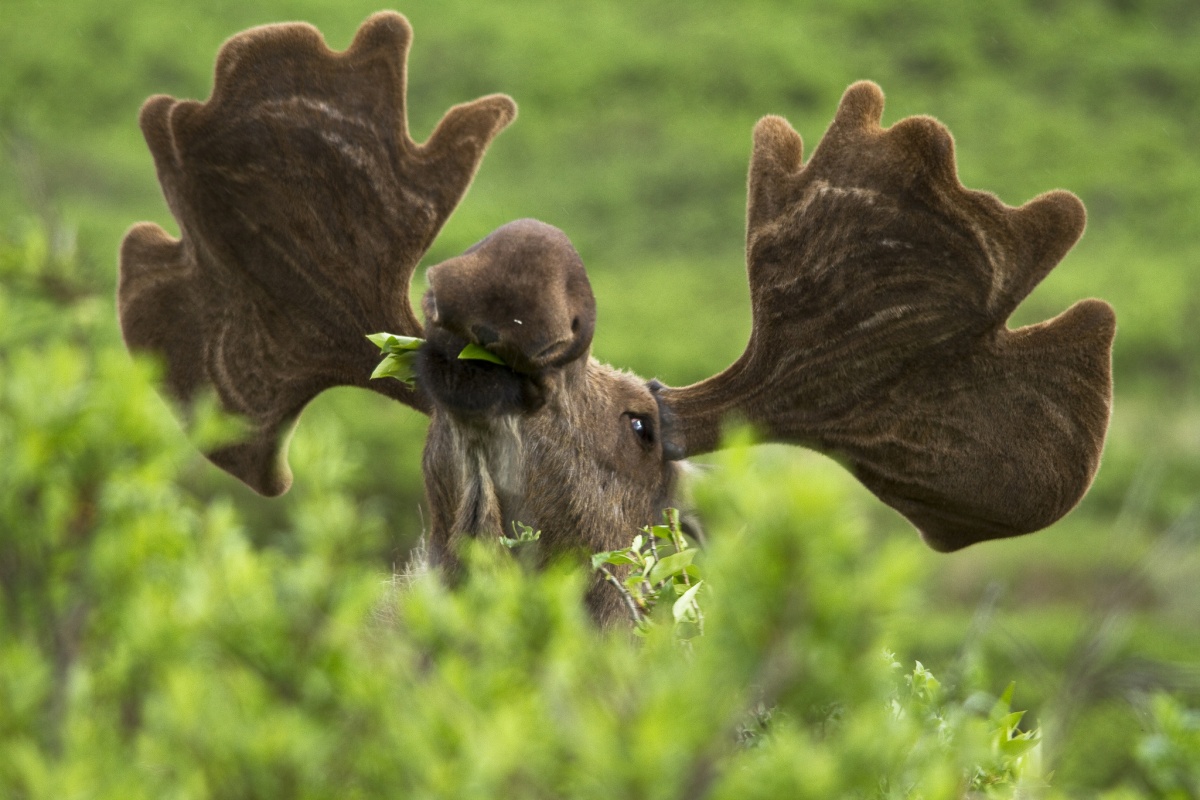
2. Salmon
Salmon require cold, fast-flowing streams and rivers to spawn. Changing stream flows and warming waters in the Pacific Northwest are already impacting some salmon species and populations. Higher temperatures accept likewise led a harmful salmon parasite to invade Alaska's Yukon River. And so while salmon might currently be on the menu, climate change is expected to bear on major commercial and recreational fishing industries in the coming years. Photo by Bureau of Land Management.
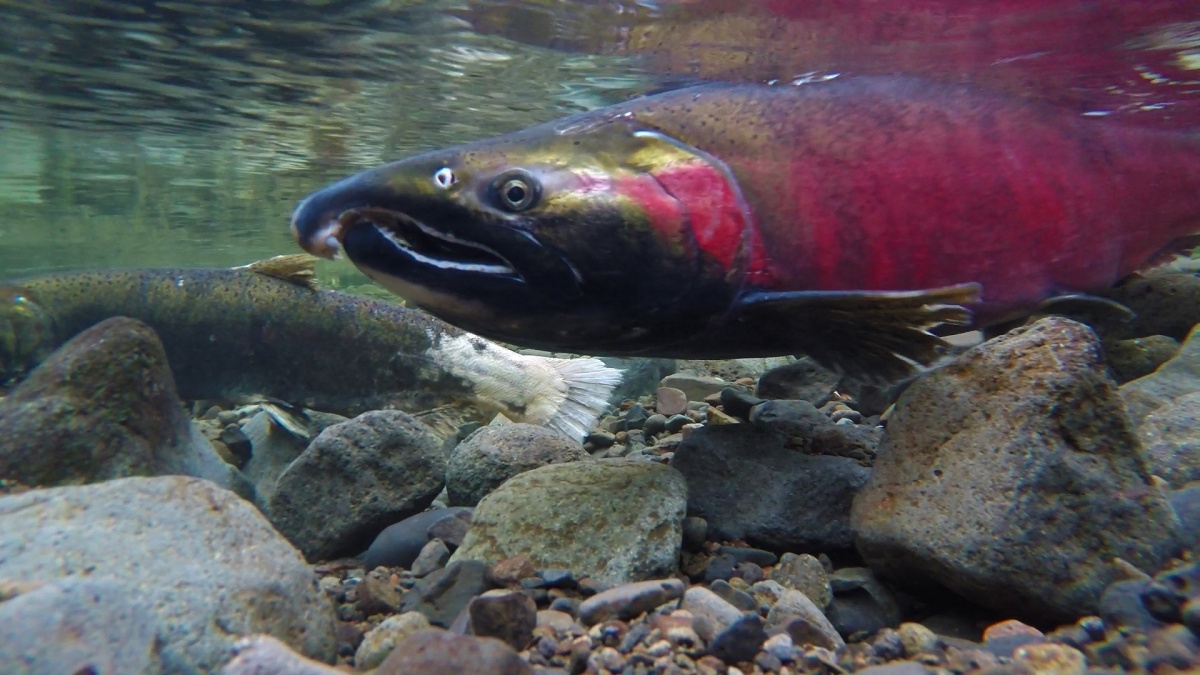
3. Snowshoe Hares
To aid hide from predators, this North American rabbit has evolved to turn white in winter to blend in with the snow. With climate change, snow in some areas is melting earlier than the hares accept grown accepted to, leaving stark white hares exposed in snow-less landscapes. This increased vulnerability might cause declines in hare populations that could lead to implications for other species. Snowshoe hares are critical players in forest ecosystems. Photo by National Park Service.
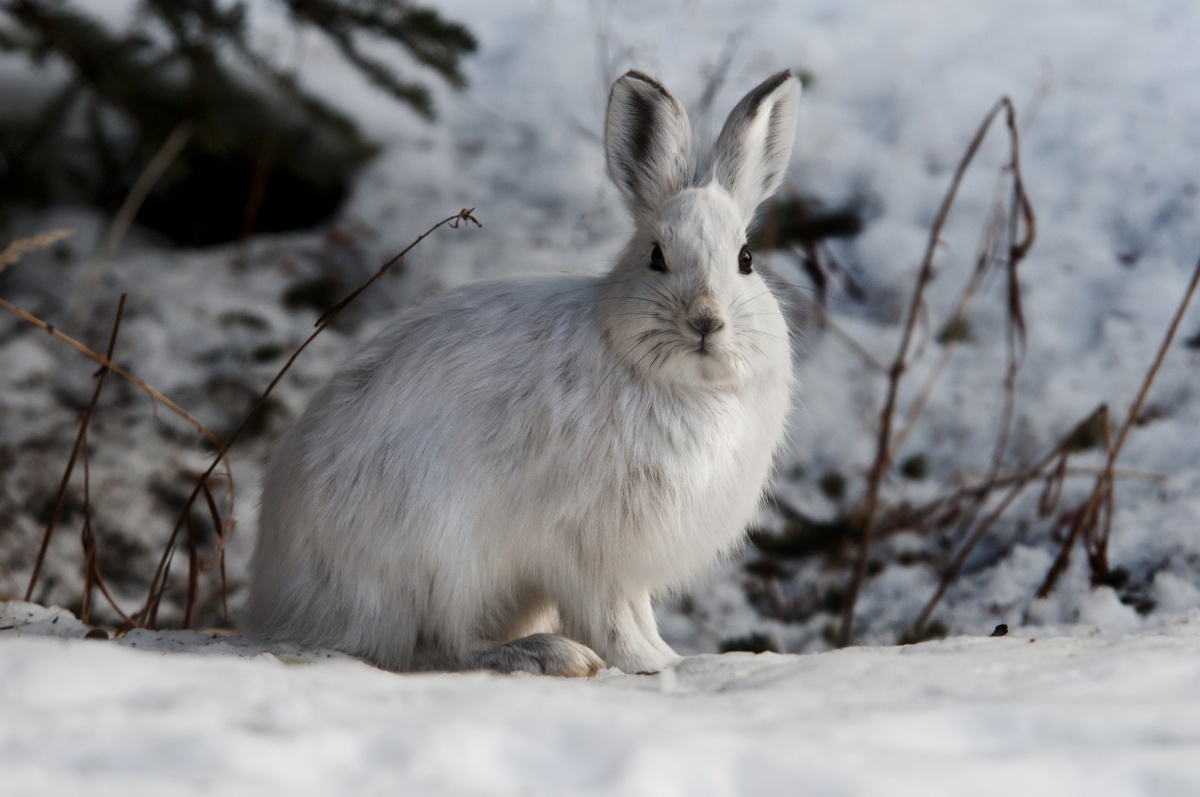
4. American Pikas
About the size and shape of a hamster, the American pika typically lives at loftier elevations where absurd, moist conditions prevail. Enquiry by U.Southward. Geological Survey has found that pika populations are now disappearing from numerous areas that span from the Sierra Nevadas to the Rocky Mountains. Populations within some areas are migrating to higher elevations likely to avoid reduced snowpacks and warmer summer temperatures. Unfortunately, pikas are strongly tied to rocky-talus habitat that is limited and patchily distributed. This gives them few options every bit temperatures continue to rise. Photograph by Jon LeVasseur (world wide web.sharetheexperience.org).
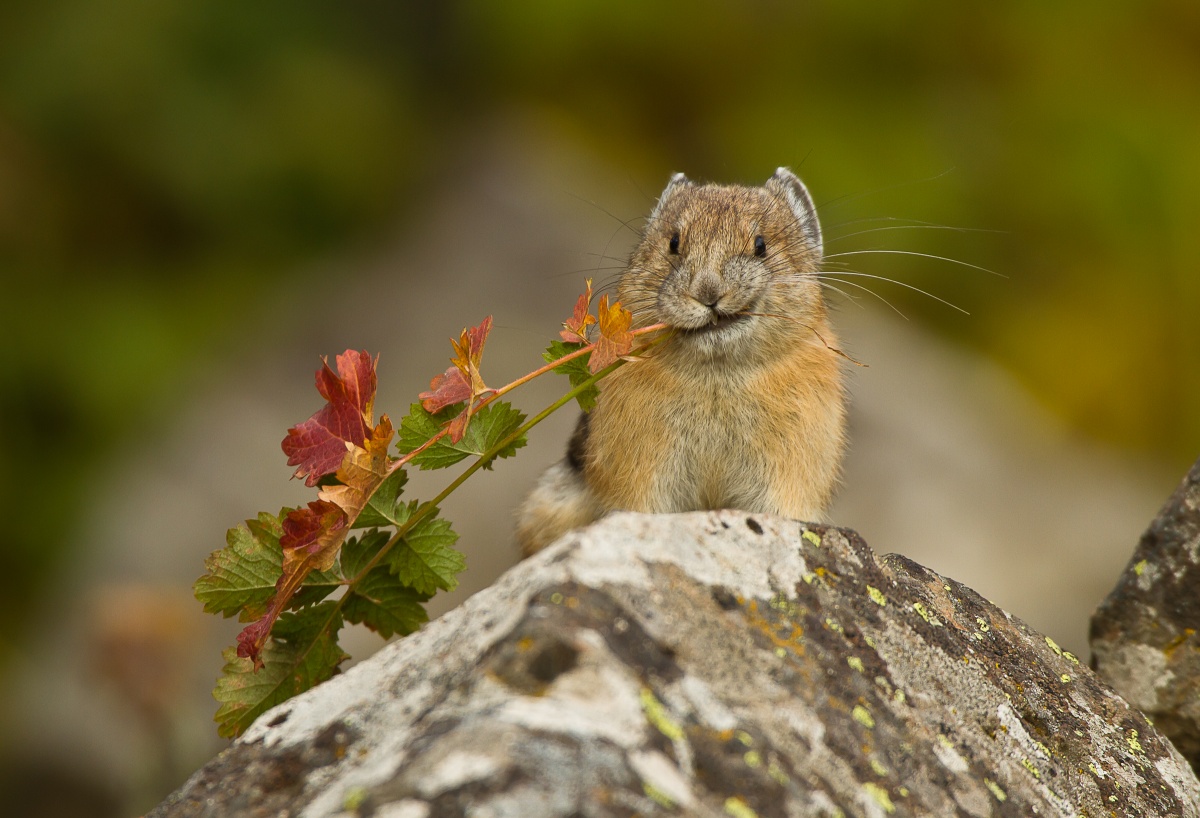
5. Sea Turtles
Various populations of sea turtle species and their nesting sites are vulnerable to sea-level ascension, increased storminess and changing temperatures -- all impacts of climate change. These factors may event in electric current nesting and foraging sites condign unsuitable for federally threatened and endangered turtle species -- especially loggerhead sea turtles. Photo by USGS.
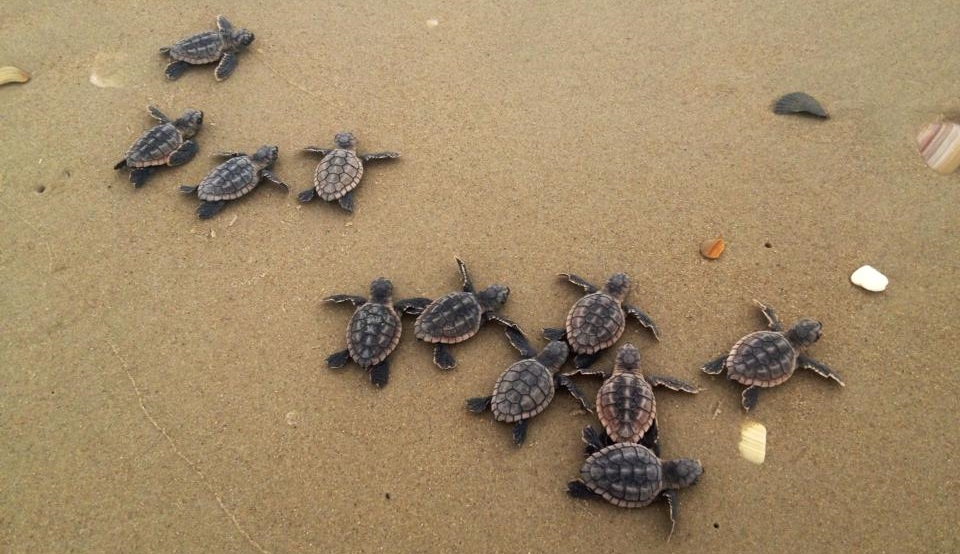
half-dozen. Puffins
These colorful-billed birds that wait like miniature penguins are experiencing population declines in the United States and elsewhere. In the Gulf of Maine, puffins are having difficulty finding their major food sources of white hake and herring. As the sea warms, the fish are moving into deeper waters or further n, making it harder for puffins to catch a repast and feed their young. Developed puffins are compensating by feeding their young butterfish, but immature puffins are unable to swallow these big fish and many are dying of starvation. Delayed convenance seasons, low birth rates and chick survival are all affecting the reproductive ability of these birds. Photograph by USFWS.
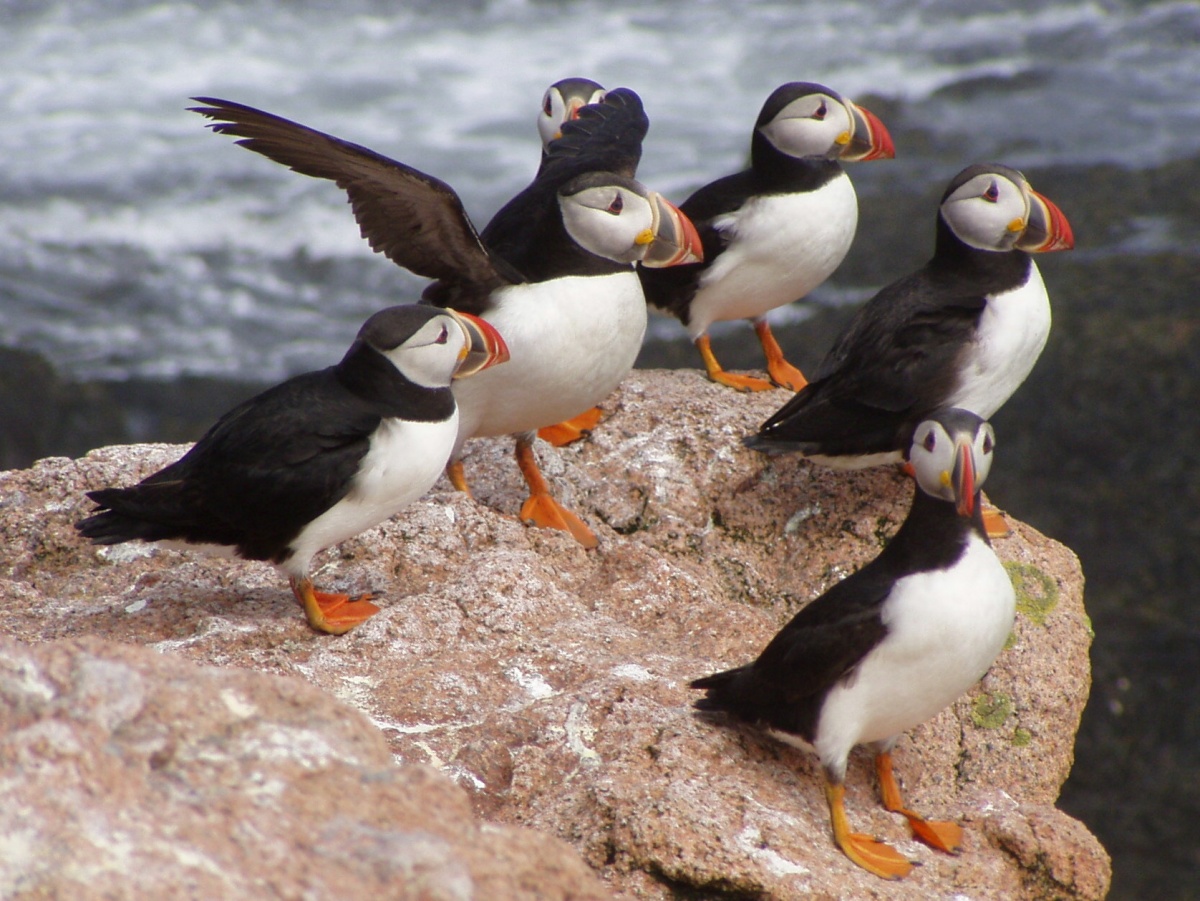
vii. Alaskan Caribou
Caribou are e'er on the motion -- it'due south not uncommon for them to travel long distances in search of acceptable food. Merely every bit temperatures increase and wildfires burn down hotter and longer in Alaska, it could considerably change the caribou's habitat and winter food sources. Ultimately, this will impact subsistence hunters who rely on caribou for nutritional, cultural and economical reasons. Photo courtesy of Jacob West. Frank.
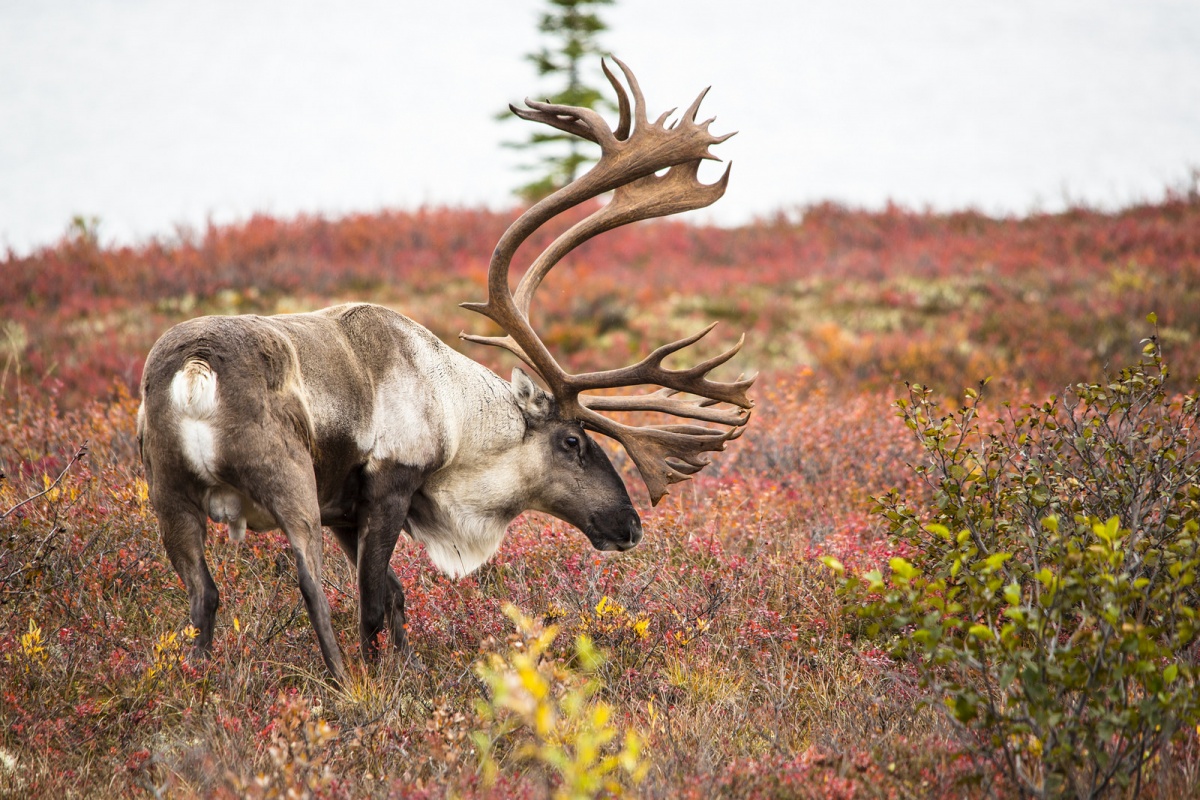
8. Pipage Plovers
The piping plover is an iconic shorebird that breeds and nests along the Atlantic Coast, the Great Lakes and the Slap-up Plains. Increased human apply of their beach habitats, including intense coastal development, as well equally ascent sea levels and storm surges associated with climate change threaten the species. Photo past USFWS.
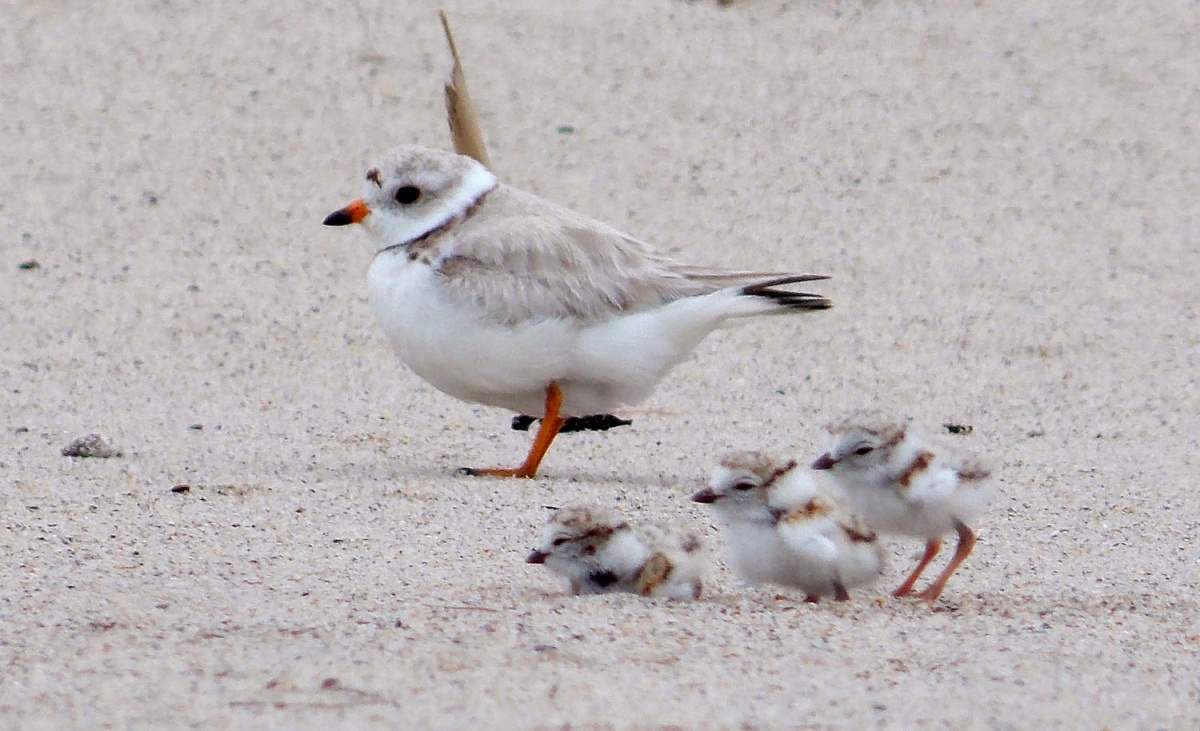
9. Polar Bears
Polar bears in many ways have go the symbol of climate change. In 2008, they were listed as a threatened species under the Endangered Species Deed -- the showtime species to be listed because of forecasted population declines from the effects of climate change. The primary cause of their pass up: loss of sea ice habitat attributed to Arctic warming. Polar bears demand body of water ice to hunt seals -- a main source of food -- as well equally to move beyond the big dwelling house ranges they need for foraging habitat. Polar bears aren't lonely in feeling the effects of shrinking sea ice. Walruses and other Arctic species are facing similar challenges equally summer ocean ice continues to retreat. Photo past National Park Service.
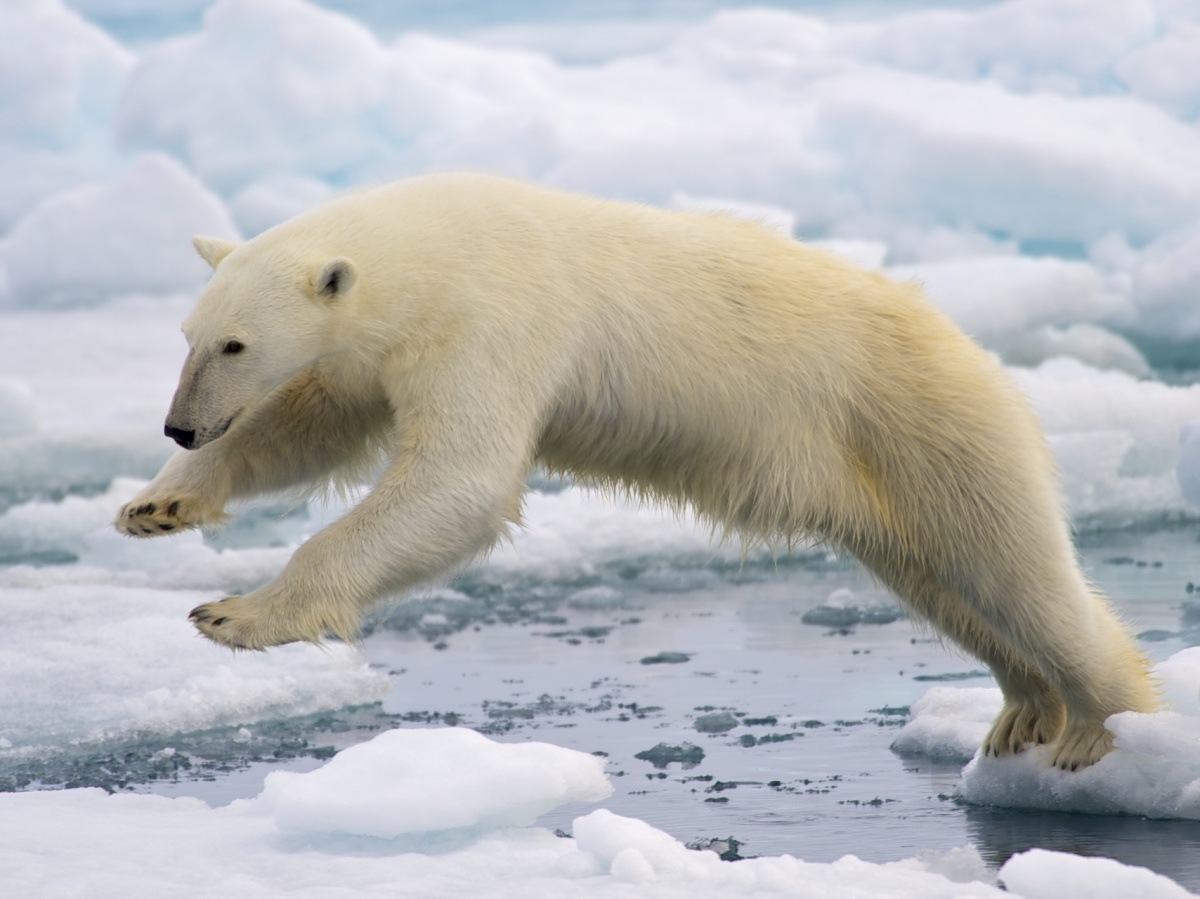
Learn more than about Interior'southward work on climate change at www.doi.gov/climate.
Source: https://www.doi.gov/blog/9-animals-are-feeling-impacts-climate-change
Posted by: walkeryety1964.blogspot.com

0 Response to "How Does Climate Affect The Adaptation Of An Animal"
Post a Comment